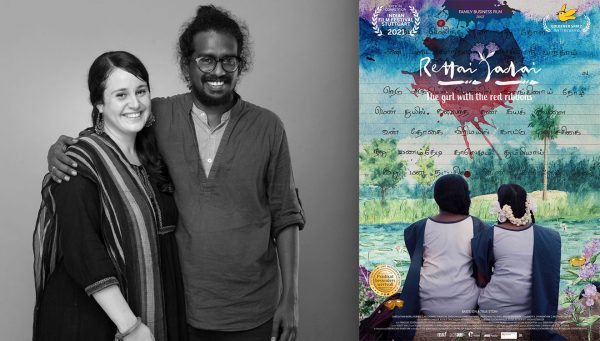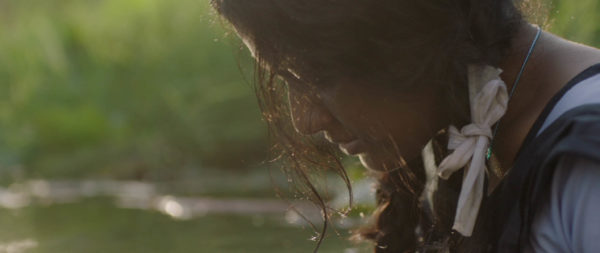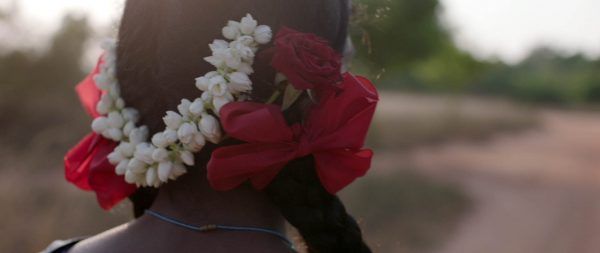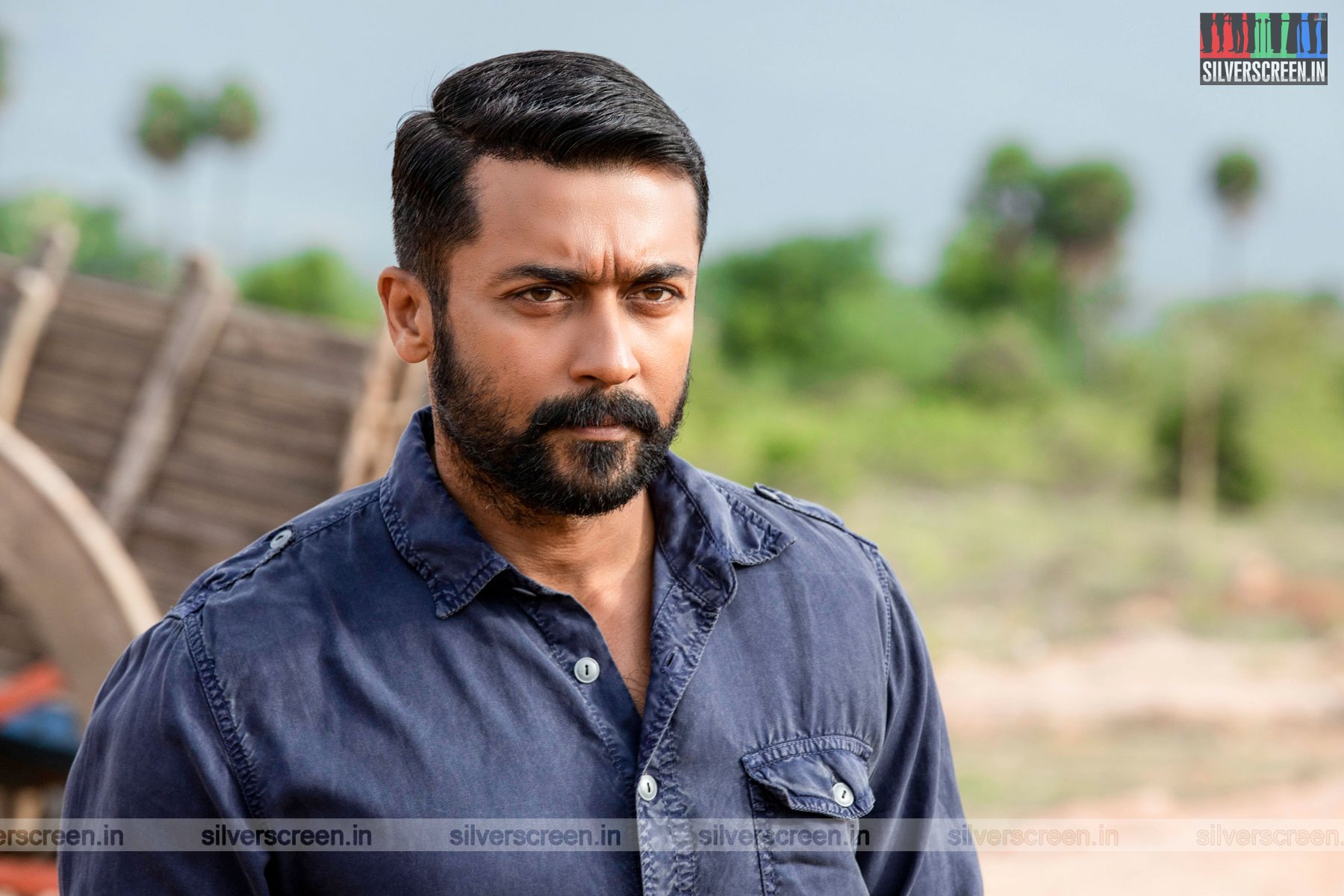Rettai Jadai (The Girl with the Red Ribbons), the Tamil short film directed by husband-and-wife filmmaker duo Jayakrishnan Subramanian and Franziska Schönenberger, is set to be screened in the Short Film Corner as part of the ongoing Cannes Film Festival 2021.
The 19-minute film premiered at the Goldener Spatz Children Film Festival in September 2020. In addition, it is also set to be screened at the upcoming 18th Indian Film Festival Stuttgart.
Rettai Jadai, which means double plaits in Tamil, follows the life of Viru, a teenager constantly ridiculed for her unruly hair. Viru wants nothing more than a set of red ribbons like the ones her best friend Bhanu wears, but her mother cannot afford them. Even as Viru is envious of Bhanu, their friendship takes a turn when Viru finds an unexpected red stain on her dress.
In conversation with Silverscreen India from Germany, the Indo-German filmmaker duo reveal that Rettai Jadai is the adaptation of an incident that happened during the childhood of Jayakrishnan’s mother, Viruthambal, and her best friend Bhanu.

Inspired by stories from childhood
The filmmakers call Rettai Jadai a “hybrid film” saying, “We don’t believe in the distinction between documentary and fiction. This film is a mixture of both. The two girls who played the leading roles are also non-actors and best friends in real life.”
Speaking about how it all started, Franziska says, “After making a few documentaries, we travelled to Cuddalore in 2018 to meet Jay’s mother. She had a lot of stories to tell about her life and for me as an outsider, it was all very interesting. She had seven sisters, but was the only one who went to school.”
Jayakrishnan adds, “My mother wanted to have double plaits like her best friend Bhanu. But she had messy hair and used banana stem thread for plaiting it.”
Viruthambal and Bhanu are still best friends in real life. “In fact, the person who played the role of Bhanu’s grandmother, is the real Bhanu. And we filmed in the actual houses they lived in as small girls,” says Jayakrishnan. “Viru’s house in the film is Bhanu’s real house, while Bhanu’s house is my house, where my mother now lives.”
The menstruation angle in the story is also inspired by Viruthambal’s stories. She told them of an article she had read about a schoolgirl on period who killed herself after a teacher scolded her over her stained uniform. “My mother then talked about how it was when she got her first period, how she thought she was dying. No one had explained it to her! That is the case even now with young girls.”
Casting and taboos surrounding menstruation

The duo wanted to cast the leads from Cuddalore where they shot the film. But they found it very difficult to do so, in large part because the film dealt with the taboo topic of menstruation. “Parents did not want their girls to act at all and when we told them the film was about menstruation, they were really not into it,” Franziska recalls.
She had not considered that it would be difficult to convince parents since the topic is looked at completely differently in her country. “In Germany, girls look forward to getting their period and want to know everything about it. It is like a competition and considered cool. This film will be an opportunity for the German audience to get a very different perspective,” she adds.
The duo eventually found their two leads through friends. “We found the girl who played Viru, Charulathaa Murali, through a friend who works in the film industry in Chennai. We then met her best friend, Rubini AS, and cast her in the role of Bhanu after a test shoot. We conducted workshops for six months to prepare them for their roles,” says Jayakrishnan.
Recommended
The only professional actor in the film is Kalieaswari Srinivasan, who plays the school teacher. The couple had chanced upon Kalieaswari after watching her Palme d’Or-winning film Dheepan (2015).
Rettai Jadai was shot in May 2019 during school summer holidays in Cuddalore and Puducherry, with a team of only 18 members including the actors.
Contrasting perspectives
When asked how the duo worked in collaboration, given that Jayakrishnan has the insider perspective as regards the setting but lacks the female gaze, while it is vice versa in Franziska’s case, the latter says, “I did not want to come to a country as a foreigner and make a film based there without having a clue.” Their conversations with Jayakrishnan’s mother helped them both.
The duo also took help from the actors themselves. “When we developed the script and dialogues, we asked Charu and Rubini how they speak, because we did not want forced dialogues. Kalieaswari also gave some insights,” says Jayakrishnan.

The inspirations of the duo were drawn from their respective backgrounds. Jayakrishnan mentions using the blooming of the kurunji flower as a metaphor for attaining puberty. He has also loosely used the archetypes of mata, pita, guru, deivam (mother, father, teacher, god). “When your parents cannot help you understand, a teacher becomes an important figure. And when she goes to god, she is prevented from entering the temple due to taboo.”
For Franziska, it was the Grimms’ Fairy Tales that served as inspiration. “The film has a bit of a fairy tale touch to it. But unlike those tales, it was important for me to convey that girls don’t have to be damsels in distress, that they can save themselves. I wanted to celebrate female friendships.”
The duo’s next project is titled Bride Without Dowry. It touches upon dowry issues among Indian expats.



